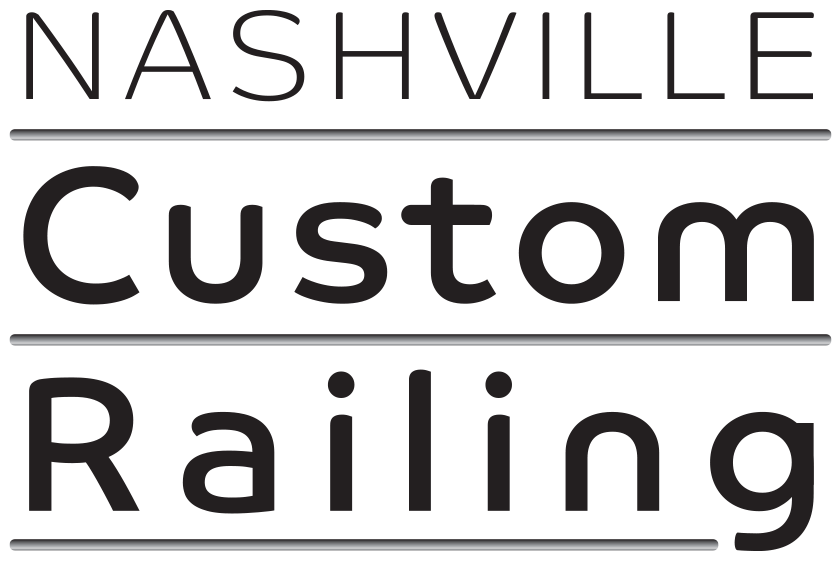Installation
Our experience will show through our results.
We Can Install Handrails On Any Substrate
Metal handrails are not just about safety; they can also add a touch of classiness and sophistication to any space. These sturdy structures can offer peace of mind when navigating steep inclines and stairways or overlooking dangerous drops. We specialize in metal railings at Nashville Railing and custom-made design products to suit our client's preferences. Our experienced team of professional fabricator ensure proper railing installation for all our products, which guarantees the safety and longevity of our handrails. While we do not manufacture or install wooden railings, we have experience on how to install railings on wood surfaces such as decks or porches.
Our experienced workers follow best practices for installing handrails and railings on various materials, including concrete, soil, brick, aggregate, cinder block, wood and pretty much anything else you can find. We are at the forefront of the installation process and fully equipped with the technical know-how and state-of-the-art tools to get the job done right! With our unwavering commitment to quality, no installation is too complicated for us. As an expert in installation services, we can confidently guarantee that every step of the installation process will be completed with precision and accuracy by our team, who follows the established best practices.
Metal Handrails: Our Best Practices for Railing Installation
Whether you need custom railing installation on concrete, wood, metal, or any other substrate, we've got you covered. We have the knowledge and experience to handle each project carefully and precisely. Read below for a closer look at our methods.
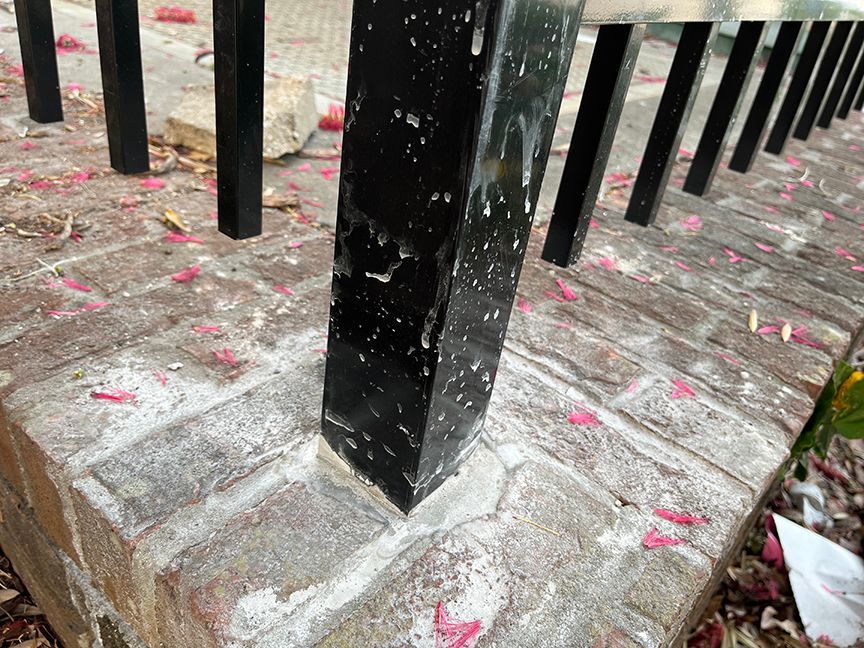
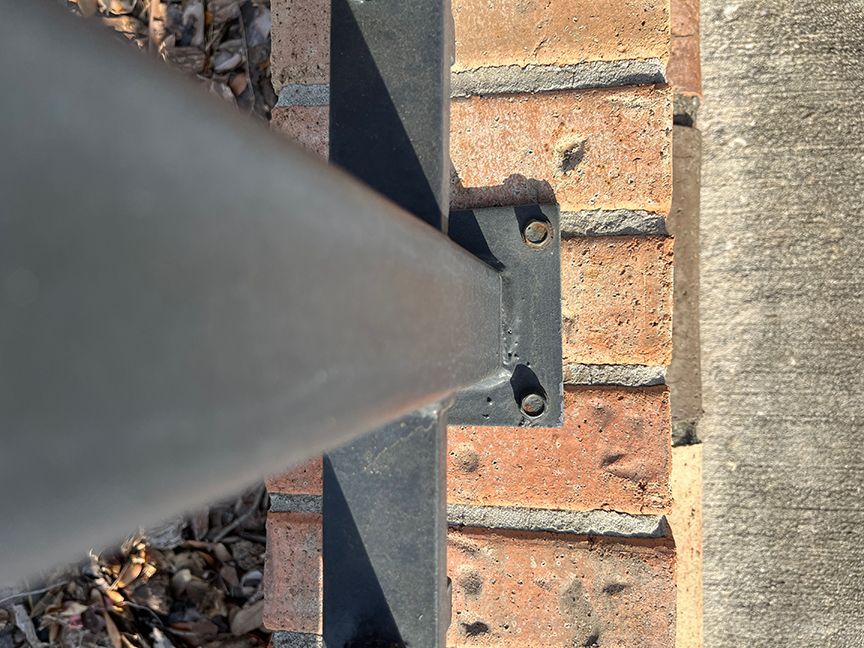
Installation on Concrete
Installing handrails on concrete requires drilling holes into the surface, typically with a rotary hammer drill, and using anchor bolts to secure the posts. We make sure to use the appropriate size and type of anchor bolt for the thickness and composition of the concrete. Before we begin, we survey the location, clean the area, and mark the holes for the flanges on the concrete base. After drilling the holes, we insert concrete anchors and secure the flange using corresponding nuts tightened with a wrench or drill. We attach the handrail bracket to the pipe with a set screw, line up the handrail with the bracket, drill pilot holes on it, and attach it using self-drilling screws. We secure the end caps by hammering them on. To attach the railing to a concrete wall, we mark the holes, drill pilot holes, attach the bracket with concrete screws, and then attach the handrail and end caps with self-drilling screws. Although the instances are extremely rare, if the rail were ever to come loose or develop a gentle wobble, we would be more than happy to come back and inspect the issue and make an adjustment or correction for you.
Installation in Soil
When installing handrails in dirt, it is essential to consider the potential for movement and erosion, which makes the process trickier than on solid surfaces. To ensure stability against lateral force, we dig holes for the posts at least two feet deep and stabilize them with concrete. It is critically important to dig a foot-deep hole for each post to ensure the proper depth, as inadequate depth can compromise the railing's ability to support weight and result in severe injury if an individual loses their balance. It is crucial to follow this guideline to ensure proper safety measures during installation.
After anchoring the posts with concrete and setting them in place using temporary braces, we attach the rails using the same process as with concrete installation. To ensure a secure and sturdy structure, we use a level to set the posts vertically, checking both perpendicular sides of each post. This level of attention is necessary to prevent potential leaning, which could compromise the strength of the railing and create a hazardous situation, not to mention it simply looks unprofessional.
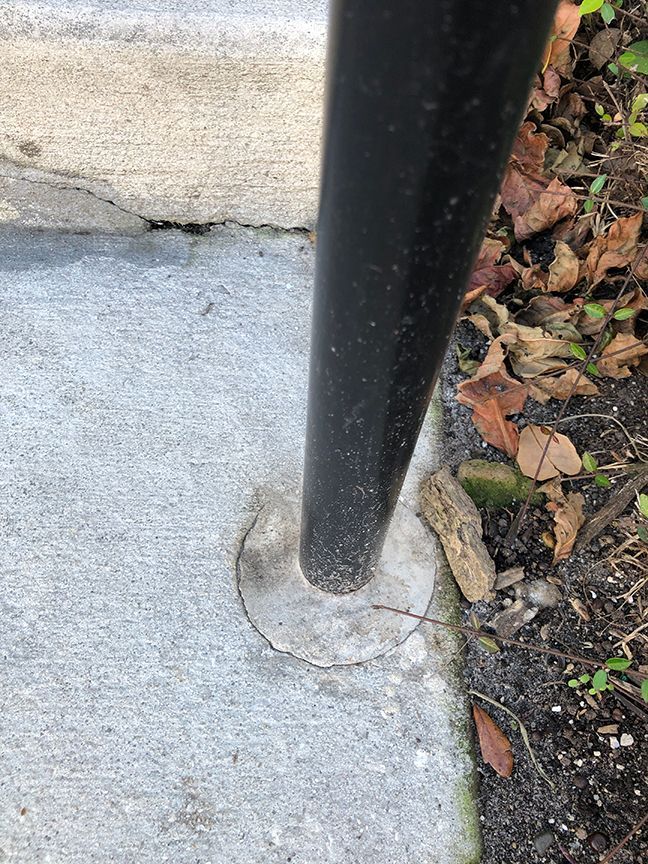
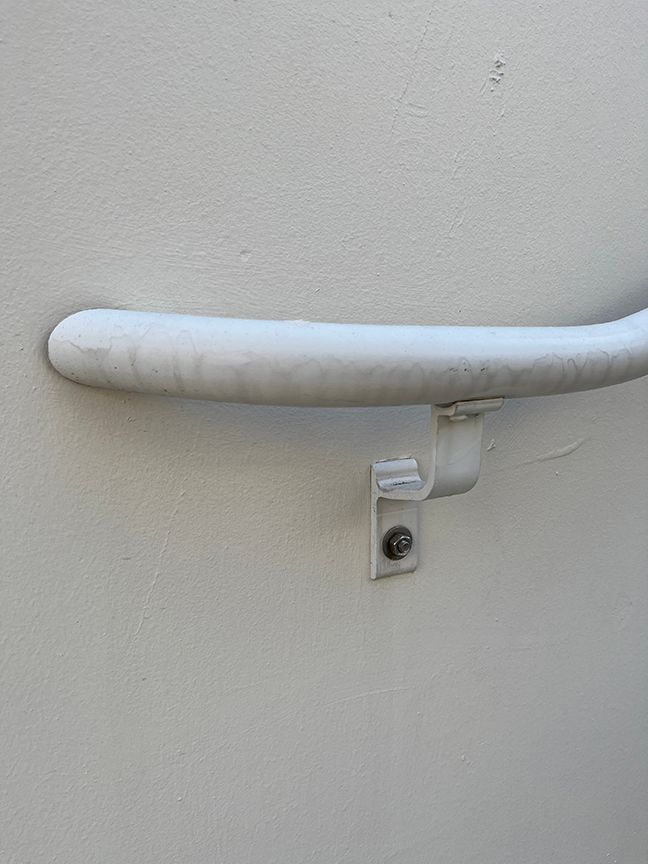
Installation on Brick
We prioritize safety when installing railings on brick at our company. To begin, we carefully measure the appropriate height of the handrail and double-check ADA requirements if needed to ensure it meets regulations. We install most railings between 34 and 38 inches above the nosing of the stairs or ground and ensure they remain at that height continuously along the length of the run. Once we've determined the proper height, we use chalk or a marker to mark the locations where we'll install the brackets. We then proceeded to drill holes in the bricks using a hammer drill with a masonry bit. We then insert lead anchors into the drilled holes to provide a solid foundation for the brackets. We strive to drill our holes into the brick as opposed to mortar because the strength and stability or brick should outlast the mortar in the long run.
After the anchors are in place, we secure the brackets to the wall using screws and bolts. Then, we cut the handrail metal to the appropriate length and slid it into the brackets. We use a level to ensure the handrail is even and adjusted as necessary. Finally, we secure the railing to the brackets using self-tapping screws. This method ensures that the handrail is firmly attached to the wall and won't become loose over time.
Installation on Aggregate or Cinder Block
The type of anchor we use when attaching something to aggregate and cinder blocks can differ from that used for other materials. Our team uses the recommended anchor, usually a toggle bolt, for these blocks. We use a masonry bit to drill holes into the aggregate or cinder block where we'll install the anchor. We then insert the toggle bolts into the holes after drilling them. The posts are then secured to these toggle bolts, ensuring a robust and secure attachment. We'll attach the top and bottom rails as standard in the end, like the examples above for the most part. Using this method, we can ensure that the linked items remain secure and in place, even with increased weight or force.
Installation on Wood
When installing metal rails into wood or composite decks, our team uses the appropriate brackets and screws. To prevent damage to the decking material and ensure a secure fastening of the handrail, we use brackets explicitly designed for attaching handrails to the these materials. If using a composite decking material, we also pre-drill the holes for the screws to prevent cracking or splitting of the material during installation.
We then install the post brackets at each marked location using lag screws or carriage bolts to attach them to the deck framing securely. We cut the railing posts to the correct length while ensuring they are straight and even, then install the railing posts into the post brackets and fasten them with screws or bolts. After installing the railing posts, we attach the top and bottom rails onto each metal post, securing them using brackets or screws depending upon the style. Many of our modern railings are built by welding large sections into as few separate pieces as possible to increase stability, decrease the chance of loose or wobbly parts over time with movement from regular use. We can attach post caps onto the top of each railing if desired or finish off the ends with ornamental elements.
Composite materials like decking are prone to expand or contract due to temperature and moisture changes. The wrong type of fastener for handrail installation can make it challenging, requiring extra care to ensure it remains securely attached over time.
Professional Railing Installers; our contractors service Nashville and surrounding areas for all your handrail projects.
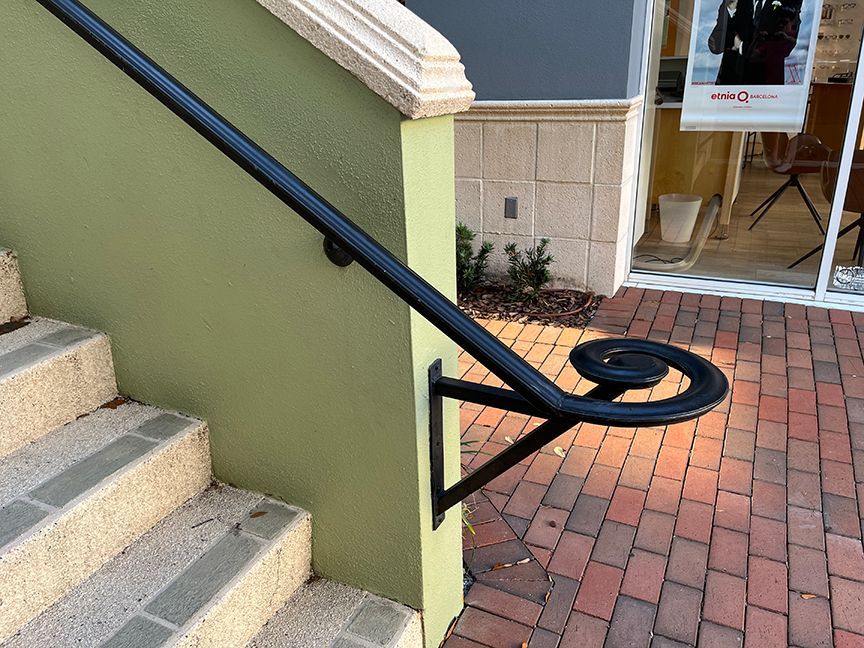

Nashville's Best Railing Service
As a highly recommended Nashville handrail installer, our best practices for installing metal handrails and railings involve careful attention to the specific requirements of different materials, along with the skillful use of appropriate tools and anchors. Our experienced installers take great care to ensure the installation process is safe, efficient, and effective. So, if you need a professional handrail installation service in Nashville, look to our skilled team. Allow us to offer you peace of mind tailor-made to your needs. Contact us at 615-247-6202 today to learn more about our customized design and installation services. We'd love to visit your property in Tennessee and take some measurements in order to provide you with a quote for one of our products.
WE SERVE CLIENTS IN THE AREAS LISTED BELOW AND MANY OTHERS
Nashville | Hillsboro-Belmont | Green Hills | Belle Meade | West Meade | West End | Sylvan Park | The Nations | Downtown | East Nashville
Brentwood | Franklin | Bellevue | Donelson | Madison | Hendersonville | Antioch | La Vergne | Smyrna | Murfreesboro | Clarksville
WE SERVE CLIENTS IN THE AREAS LISTED BELOW AND MANY OTHERS
Nashville | Hillsboro | Belmont | Green Hills | Belle Meade | West Meade | West End | Sylvan Park | The Nations | Downtown | East Nashville
Brentwood | Franklin | Bellevue | Donelson | Madison | Hendersonville | Antioch | La Vergne | Smyrna | Murfreesboro | Clarksville | Gallatin
Mt. Juliet | Hillwood | White Bridge | Melrose | 12 South | Berry Hill | Glencliff
